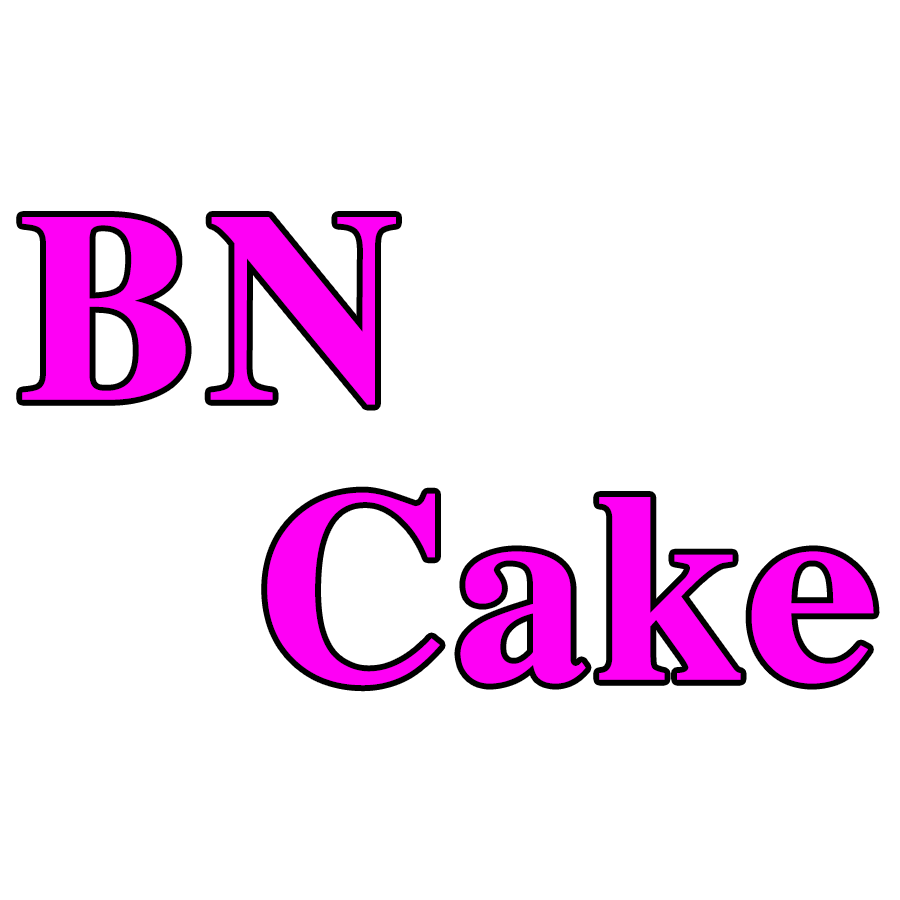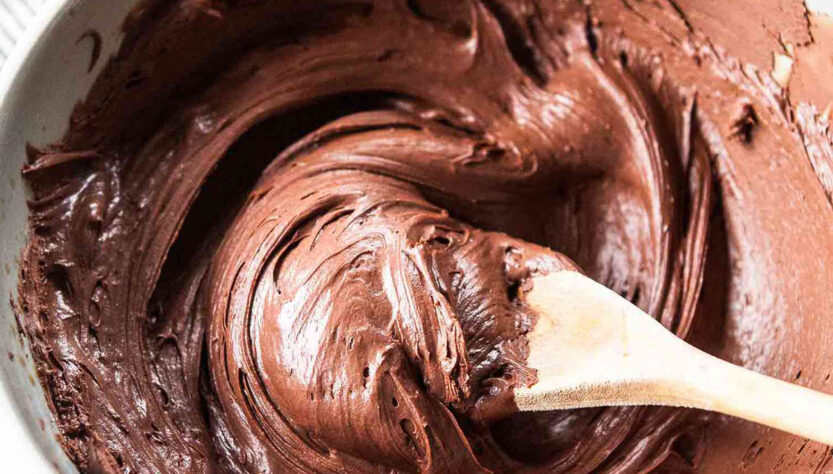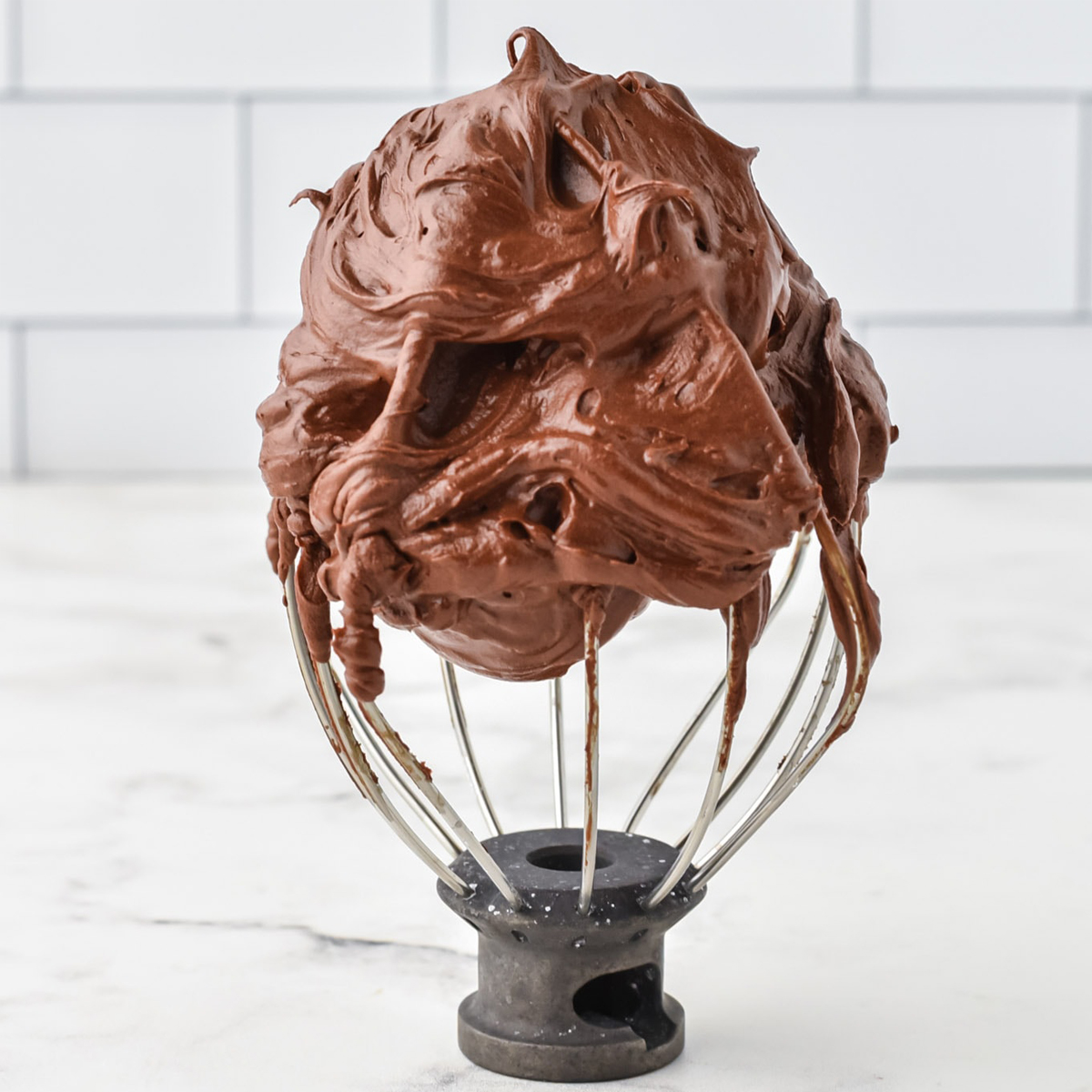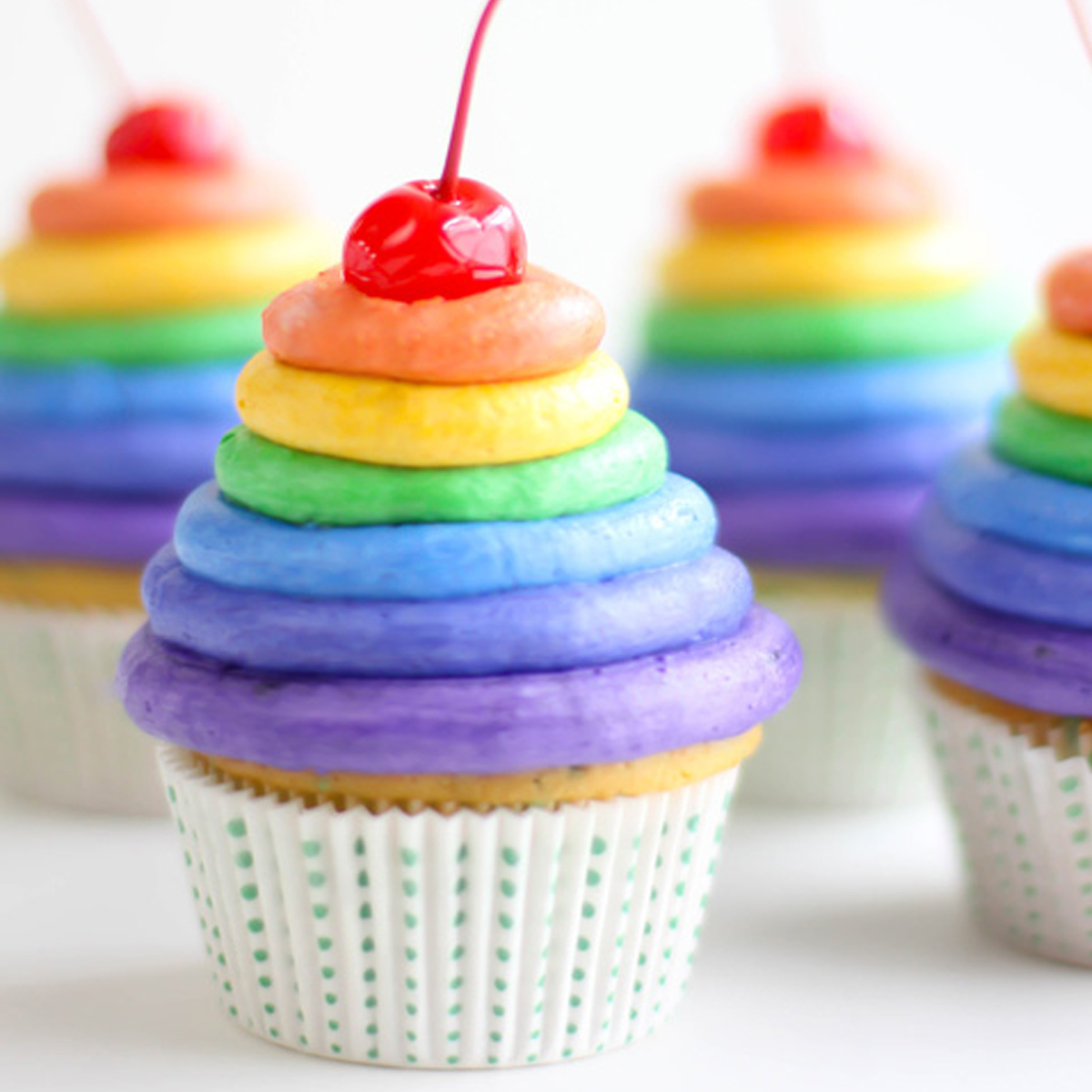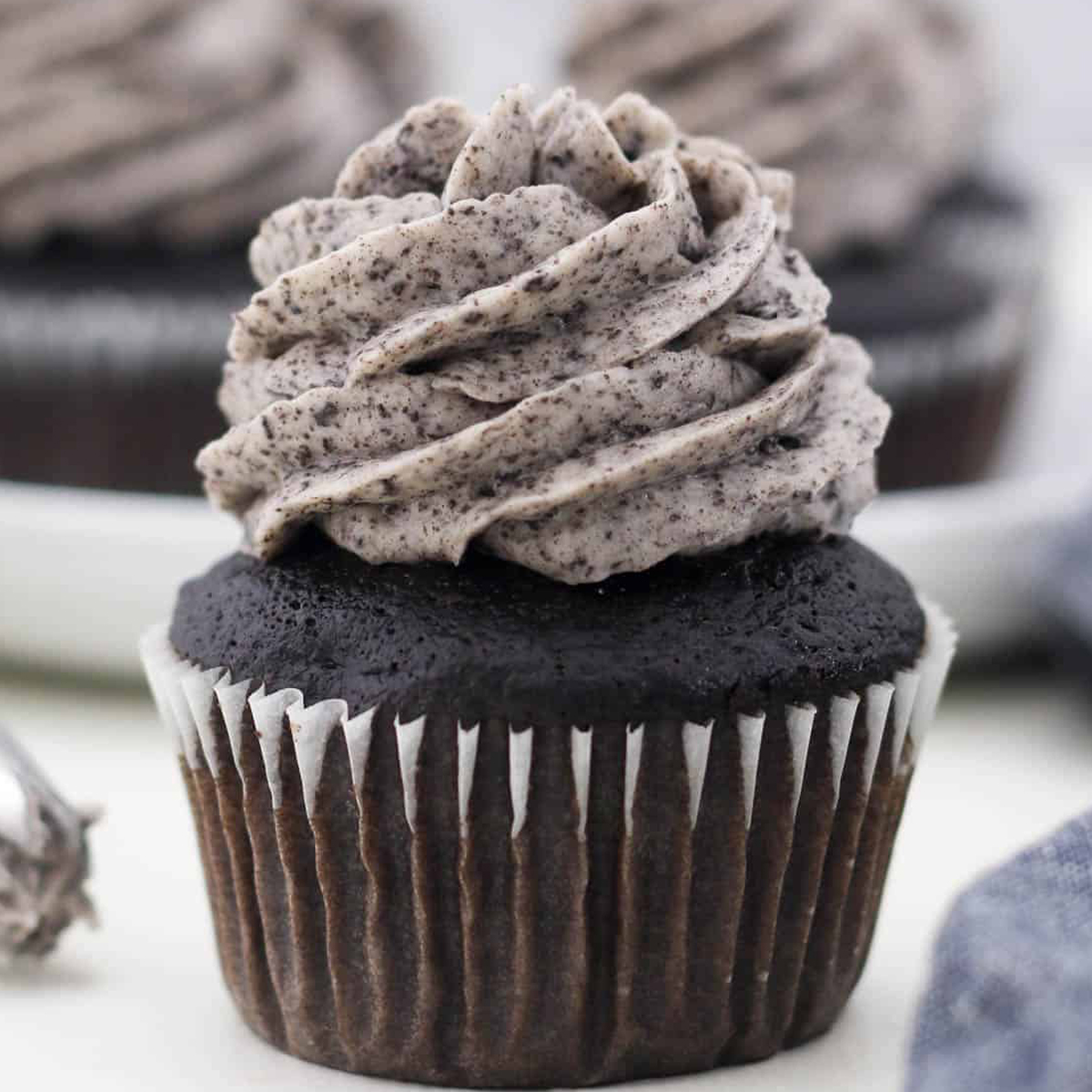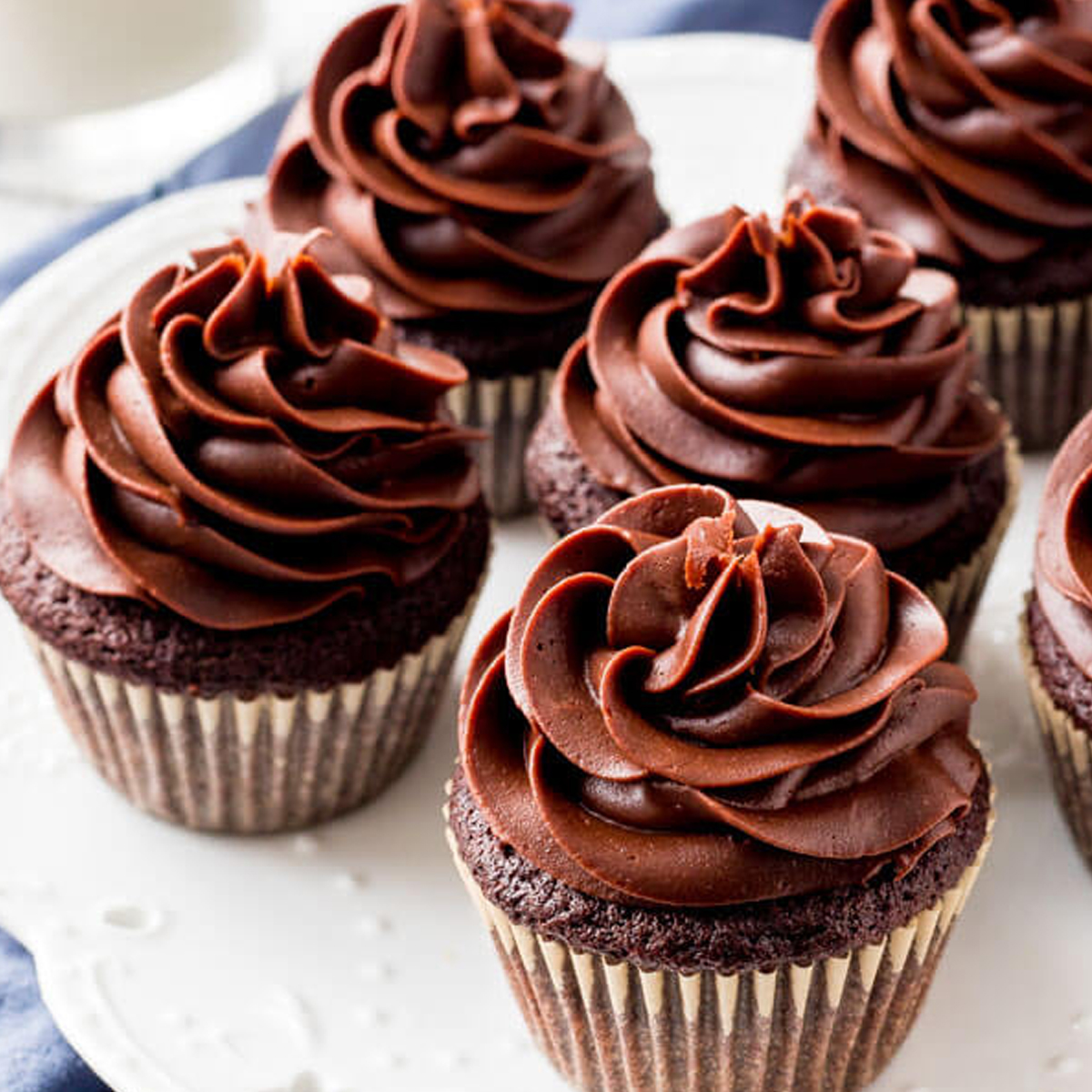Chocolate frosting is a luscious and velvety topping that transforms ordinary cakes, cupcakes, cookies, and desserts into decadent, cocoa-rich delights. This beloved sweet concoction is a staple in the world of baking and confectionery, cherished for its rich chocolate flavor and smooth, spreadable consistency. Whether generously slathered over a birthday cake, drizzled onto brownies, or used as a filling between layers of a gourmet dessert, chocolate frosting adds an irresistible layer of indulgence that’s adored by chocoholics of all ages. In this introduction, we’ll explore the world of chocolate frosting, its versatility, and the joy it brings to homemade and store-bought treats alike.
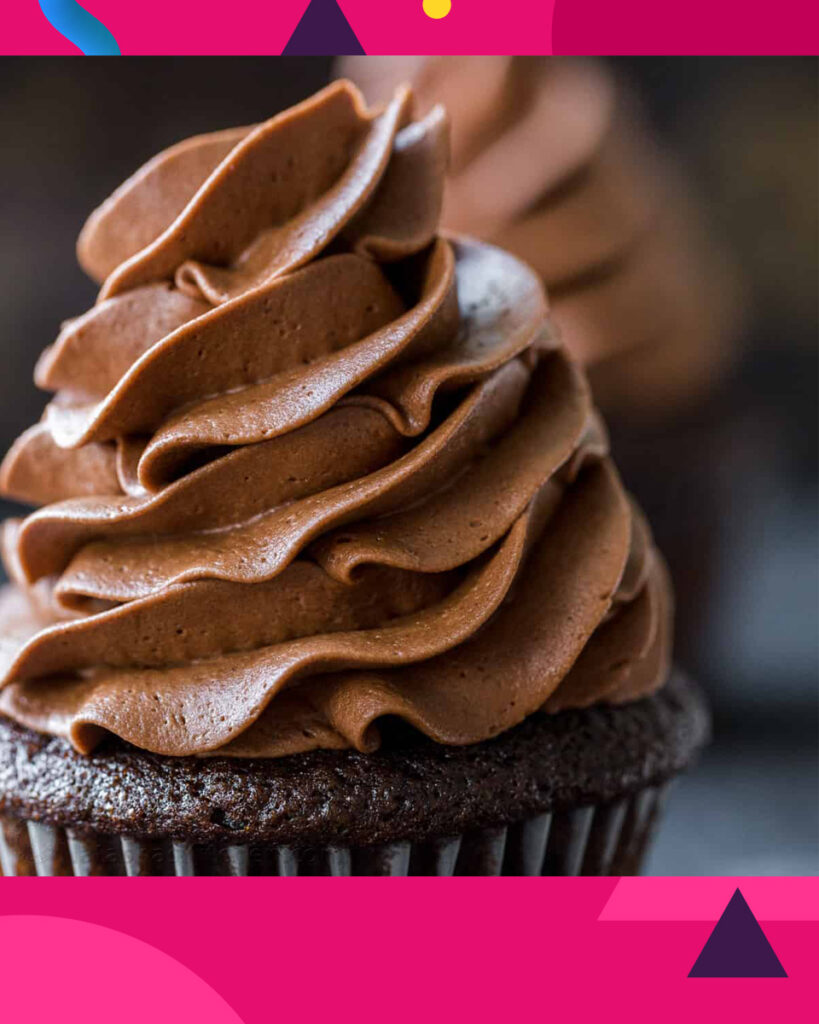
What Is Chocolate Frosting?
Chocolate frosting is a delectable confectionery topping made primarily from cocoa, sugar, and fat. It’s a creamy and indulgent mixture that adds a rich, chocolatey flavor and a smooth, spreadable texture to various baked goods and desserts. This versatile frosting is a staple in the world of baking and is used to decorate and enhance the taste of cakes, cupcakes, cookies, brownies, and more.
The key ingredients in chocolate frosting typically include cocoa powder or melted chocolate for the chocolate flavor, powdered sugar (confectioners’ sugar) for sweetness, and a fat source such as butter or shortening to achieve a creamy consistency. Additional ingredients like milk or cream, vanilla extract, and a pinch of salt are often incorporated to balance flavors and adjust the texture to the desired level of creaminess.
Chocolate frosting can vary in texture, ranging from light and fluffy to thick and fudgy, depending on the specific recipe and its intended use. It can be customized with different types of chocolate, such as dark chocolate or white chocolate, to create various flavor profiles. Additionally, chocolate frosting can be tinted with food coloring for decorative purposes, and it serves as an excellent canvas for piping intricate designs or adding sprinkles and decorations to baked goods.
Overall, chocolate frosting is a beloved component in the world of desserts, known for its ability to turn ordinary treats into chocolatey masterpieces, making them even more irresistible to chocolate lovers everywhere.
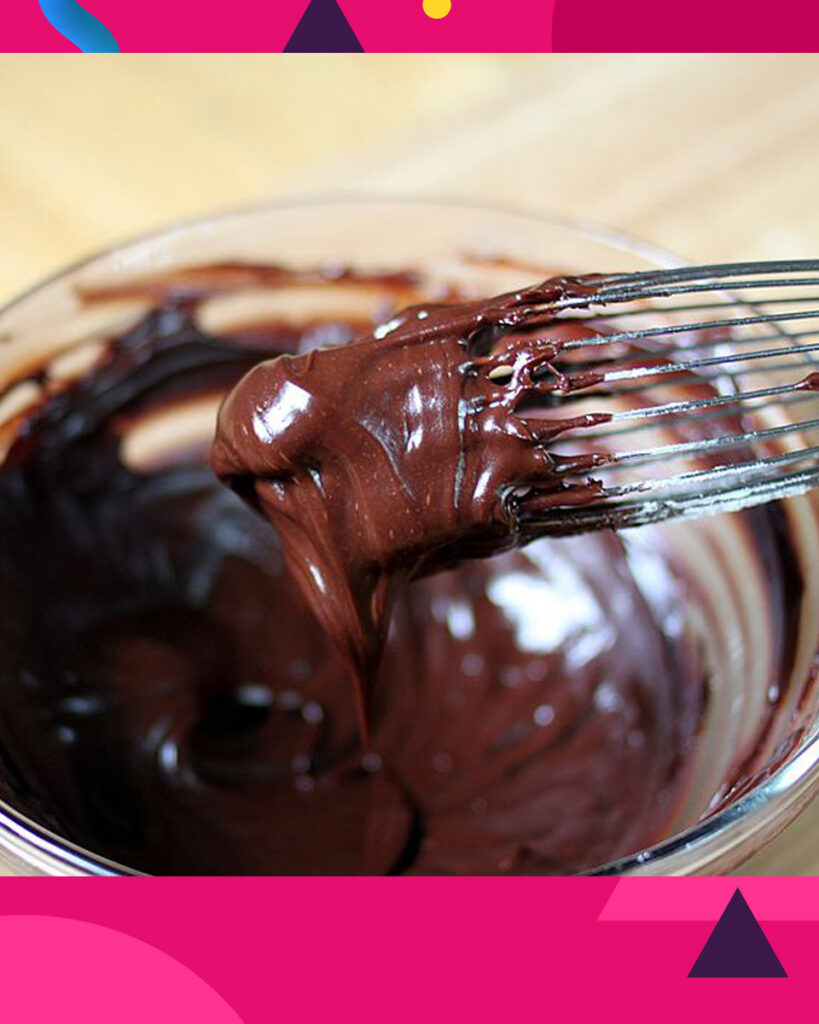
Why You Will Love Chocolate Frosting Recipe?
- Decadent Chocolate Flavor: Chocolate frosting is a cocoa lover’s dream come true. It delivers an intensely rich and indulgent chocolate flavor that takes your desserts to the next level of deliciousness.
- Versatile: It’s incredibly versatile and complements a wide range of baked goods, from cakes and cupcakes to brownies and cookies. You can even use it as a filling between layers or a dip for fruit.
- Homemade Goodness: Making your own chocolate frosting allows you to control the quality of ingredients, ensuring a fresher and more natural taste compared to store-bought versions.
- Customizable Consistency: You can tailor the consistency of your chocolate frosting to suit your preference, whether you prefer it light and fluffy or thick and fudgy.
- Easy to Make: Most chocolate frosting recipes are straightforward and don’t require advanced baking skills. With a few simple ingredients and steps, you can whip up a batch in no time.
- Endless Decorating Possibilities: Chocolate frosting is an excellent canvas for creative decorating. You can pipe intricate designs, add colorful sprinkles, or drizzle contrasting sauces for a visually stunning dessert.
- Homemade Touch: It adds a special homemade touch to your baked goods, making them even more special for family gatherings, celebrations, and occasions.
- Custom Flavor Profiles: You can experiment with different types of chocolate (dark, milk, or white), add extracts like mint or orange for unique flavor twists, or even spike it with liqueurs for an adult dessert.
- Kid-Friendly: Kids (and adults) love chocolate, so any dessert adorned with chocolate frosting is sure to be a hit at family gatherings and children’s parties.
- Satisfaction Guaranteed: The pleasure of creating and indulging in homemade chocolate frosting is immensely satisfying, making it a rewarding addition to your baking repertoire.
In summary, a homemade Chocolate Frosting recipe offers a delightful way to infuse your desserts with that beloved chocolatey goodness. It’s a versatile, customizable, and crowd-pleasing topping that adds a layer of indulgence to your favorite treats, making them even more irresistible.

Ingredients For Chocolate Frosting
- 1 cup (2 sticks) unsalted butter, softened: Butter adds richness and a smooth texture to the frosting.
- 2/3 cup unsweetened cocoa powder: Cocoa powder provides the chocolate flavor. Use high-quality cocoa for the best results.
- 3 cups powdered sugar (confectioners’ sugar): Powdered sugar sweetens and thickens the frosting.
- 1/3 cup milk or heavy cream: Milk or cream helps achieve the desired consistency. Heavy cream yields a richer frosting.
- 1 teaspoon pure vanilla extract: Vanilla extract enhances the overall flavor of the frosting.
- A pinch of salt: A small amount of salt balances the sweetness and enhances the chocolate flavor.
Optional Additions:
You can customize your Chocolate Frosting with these optional ingredients:
- Additional cocoa powder: For a more intense chocolate flavor.
- Melted chocolate: Incorporate melted and cooled chocolate for a richer and smoother texture.
- Flavored extracts: Experiment with other extracts like mint, orange, or almond for unique flavor variations.
- Liqueurs: Adults can add a touch of liqueur like Kahlúa, Irish cream, or Grand Marnier for a boozy twist.
Note: The quantities mentioned above are for a standard Chocolate Frosting recipe. You can adjust the quantities based on your desired consistency and flavor. Additionally, you can modify the recipe to make more or less frosting depending on your needs.
How To Make Chocolate Frosting
- In a mixing bowl, soften the butter by leaving it at room temperature for a while. It should be soft but not melted.
- Sift the unsweetened cocoa powder into a separate bowl to remove any lumps.
- In a large mixing bowl, combine the softened butter and sifted cocoa powder. Use a hand mixer or stand mixer on low speed to blend them together until well combined.
- Gradually add the powdered sugar, one cup at a time, and continue mixing on low speed. Scrape down the sides of the bowl with a spatula as needed to ensure even mixing.
- Add the milk or heavy cream and mix on low speed until the frosting starts to come together. You can adjust the quantity of milk or cream to achieve your desired consistency. For a thicker frosting, use less liquid; for a lighter, fluffier frosting, use more.
- Add the pure vanilla extract and a pinch of salt to the frosting. Mix until everything is fully incorporated and the frosting is smooth and creamy.
- Taste the frosting and adjust the sweetness or flavor to your liking. If you want a stronger chocolate flavor, you can add more cocoa powder or melted chocolate at this stage.
- If you’re using any optional additions like flavored extracts or liqueurs, add them and mix until well combined.
- Once your Chocolate Frosting is ready, you can use it immediately to frost your cakes, cupcakes, or other desserts. If you’re not using it right away, cover the frosting with plastic wrap or store it in an airtight container to prevent it from drying out.
Enjoy your homemade Chocolate Frosting, and get creative with your dessert creations!
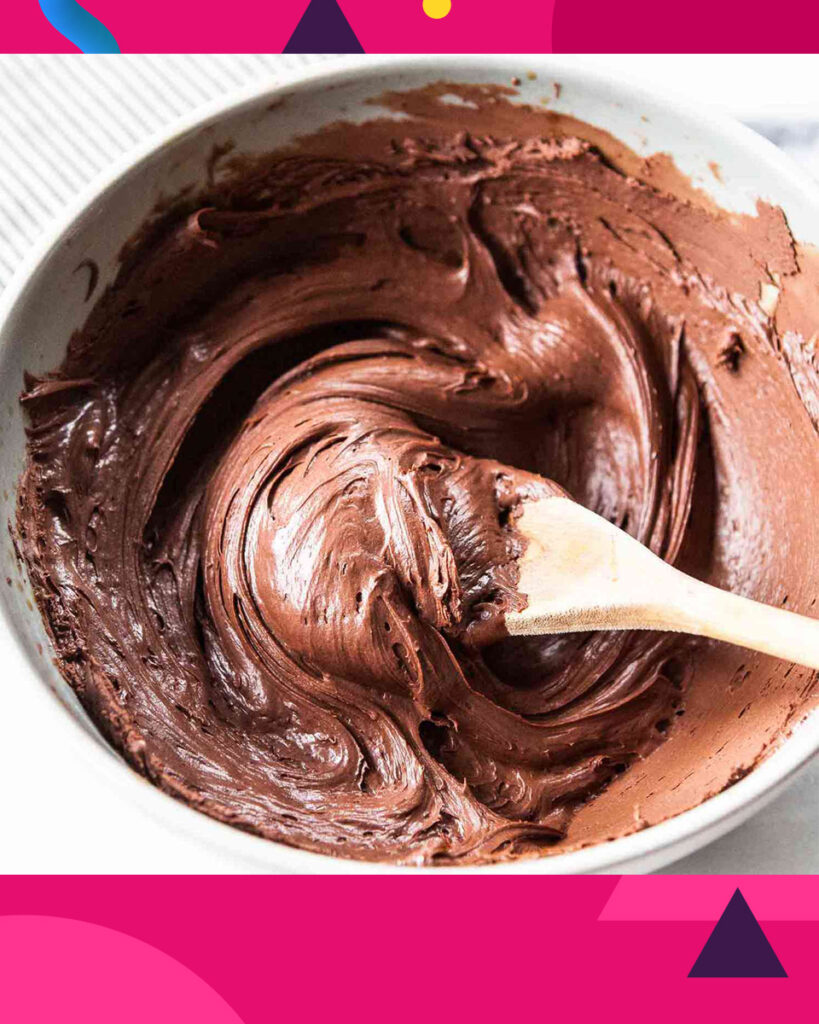
How To Serve Chocolate Frosting
Chocolate frosting is a delightful addition to a wide range of desserts and treats. Here’s how to serve it:
- Frosting Cakes: Spread chocolate frosting generously between cake layers and on the cake’s surface. You can create a classic layer cake or experiment with different cake flavors for a delectable combination.
- Decorating Cupcakes: Pipe or spread chocolate frosting onto cupcakes to create beautifully decorated treats. Add sprinkles, chocolate shavings, or other decorations for a finishing touch.
- Brownies: Frost brownies with chocolate frosting to enhance their flavor and add an extra layer of sweetness. You can also drizzle the frosting for a decorative touch.
- Cookies: Sandwich two cookies together with a dollop of chocolate frosting for a delightful cookie sandwich. You can use classic chocolate chip cookies or try different cookie varieties.
- Donuts: Dip donuts into warm chocolate frosting, allowing them to cool and set before serving. Add sprinkles or crushed nuts for texture and flavor.
- Cupcake and Cake Pops: Dip cupcake or cake pops into chocolate frosting to create a smooth and delicious coating. Decorate with colorful sprinkles or drizzles.
- Filling Pastries: Fill pastries, such as cream puffs or eclairs, with chocolate frosting for a delightful and creamy center.
- Ice Cream Topping: Melt the frosting slightly and drizzle it over ice cream or frozen yogurt for a warm and gooey topping.
- Dipping Fruit: Serve chocolate frosting as a dipping sauce for fresh fruit like strawberries, banana slices, or apple wedges.
- Hot Chocolate Enhancer: Drop a dollop of chocolate frosting into a hot cup of cocoa for an extra indulgent treat. Stir until it’s fully melted for a rich and creamy hot chocolate experience.
- Filling for Crepes or Pancakes: Use chocolate frosting as a filling for crepes or pancakes, roll them up, and enjoy a sweet breakfast or dessert.
- Sandwiches: Spread chocolate frosting between graham crackers, biscuits, or bread slices for a sweet sandwich treat.
- Cakes in a Jar: Layer chocolate frosting with crumbled cake in a jar for a portable and delightful dessert.
Remember that the way you serve chocolate frosting depends on your creativity and the types of desserts you enjoy. It’s a versatile topping that can turn any dessert into a chocolate lover’s delight.
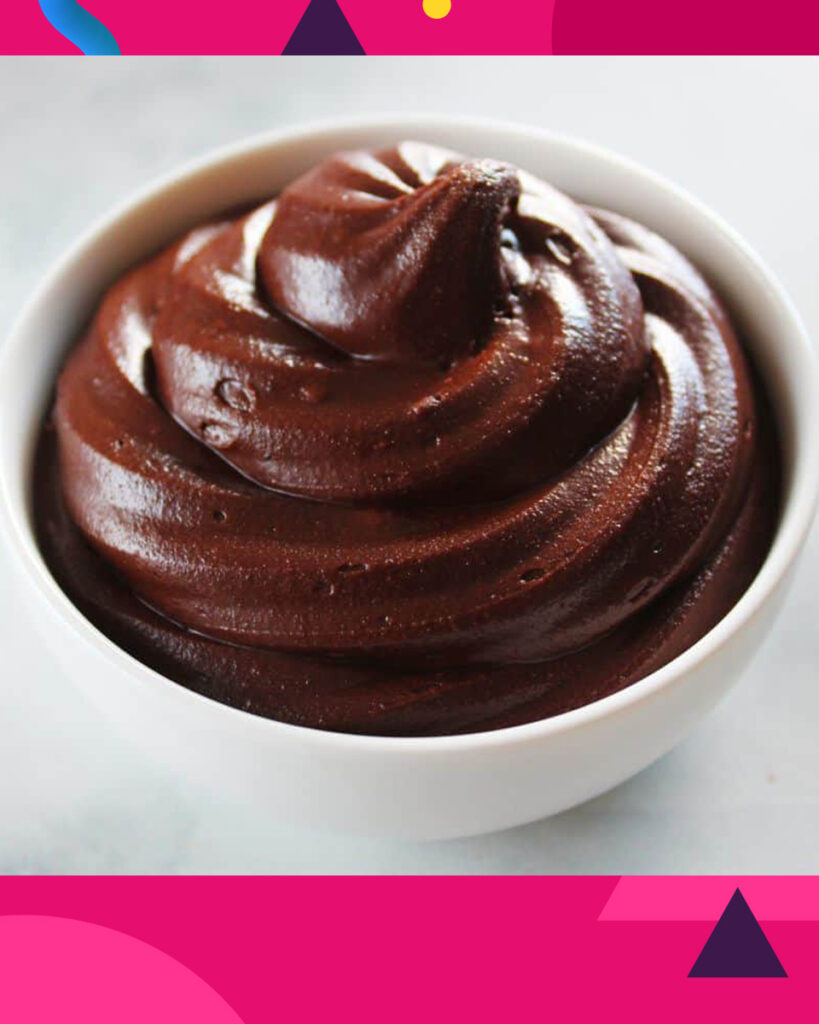
How To Store Chocolate Frosting
Storing chocolate frosting properly is important to maintain its texture and flavor. Here are steps to store chocolate frosting:
1. Airtight Container: Transfer any leftover chocolate frosting into an airtight container. Ensure that the container is clean and dry before placing the frosting inside.
2. Cover Surface: To prevent the frosting from drying out or forming a skin, press a piece of plastic wrap directly onto the surface of the frosting. This creates a barrier that keeps the frosting moist and fresh.
3. Seal Tightly: Seal the airtight container securely to prevent air from entering. If your container has a lid, make sure it’s closed tightly.
4. Refrigeration: Chocolate frosting can be stored in the refrigerator for up to one week. Keep it in the main section of the fridge, not the freezer compartment, as freezing can alter the texture.
5. Freezing (Optional): If you want to store chocolate frosting for an extended period, you can freeze it. Place the airtight container with the frosting in the freezer. It can be stored for up to 2-3 months. To thaw, move it to the refrigerator and let it gradually come to room temperature. Be prepared to re-mix the frosting to restore its original consistency.
6. Check Before Use: Before using the stored frosting, check for any signs of spoilage, such as an off smell or unusual texture. If it appears fine and smells normal, it should be safe to use.
7. Room Temperature: If you plan to use the frosting within a day or two, you can keep it at room temperature, tightly sealed. However, be mindful of warm weather conditions, as the frosting can become too soft.
8. Stir Before Using: After storage, it’s a good practice to give the frosting a gentle stir or beat with a mixer to restore its original consistency and smoothness.
Properly stored chocolate frosting can be a convenient way to have frosting on hand for impromptu baking projects or to add a sweet touch to your favorite desserts.
If You Love This Recipe Try These Out!
Tips And Tricks For Chocolate Frosting
Achieving perfect chocolate frosting can be a breeze with a few tips and tricks. Here are some handy suggestions to help you create delicious and flawless chocolate frosting:
- Use Quality Cocoa Powder: Start with high-quality unsweetened cocoa powder for the best chocolate flavor. Dutch-processed cocoa powder can provide a smoother and less acidic taste.
- Room Temperature Ingredients: Ensure that your butter, milk, and eggs are at room temperature. This helps in achieving a smooth and consistent texture in your frosting.
- Sift the Cocoa: Sifting cocoa powder before adding it to the frosting can help prevent lumps and ensure an even distribution of chocolate flavor.
- Gradually Add Sugar: When adding powdered sugar to your frosting, do it gradually, one cup at a time. This prevents lumps and allows you to control the sweetness and consistency of the frosting.
- Adjust Liquid: The amount of milk or cream you add can vary based on your desired consistency. For a thicker frosting, use less liquid; for a lighter, fluffier frosting, use more.
- Don’t Overmix: Overmixing can make the frosting dense and stiff. Mix just until all ingredients are fully incorporated to maintain a light and fluffy texture.
- Add Salt Sparingly: A pinch of salt enhances the chocolate flavor without making the frosting salty. Start with a small amount and taste before adding more.
- Flavor Variations: Experiment with different flavor variations. For a mocha flavor, add a bit of instant coffee granules. For a minty twist, use peppermint extract. Almond extract can provide a delightful nutty note.
- Room Temperature Frosting: If you refrigerate leftover frosting, allow it to come to room temperature before using it again. This makes it easier to work with and spread.
- Decorate Creatively: Get creative with decorating by using piping tips, chocolate shavings, colorful sprinkles, or crushed nuts. Chocolate frosting is an ideal canvas for imaginative decorations.
- Thin or Thicken as Needed: If your frosting is too thin, add more powdered sugar. If it’s too thick, a little extra milk or cream can help achieve the desired consistency.
- Melted Chocolate: For an extra chocolatey boost, melt some high-quality chocolate and incorporate it into the frosting. This can result in a smoother and glossier texture.
- Storage: To prevent the frosting from drying out, cover its surface with plastic wrap, ensuring it’s in direct contact with the frosting to create a barrier.
Remember that practice makes perfect when it comes to frosting, so don’t be discouraged if your first attempts aren’t flawless. With these tips and a bit of experimentation, you’ll master the art of making delectable chocolate frosting.
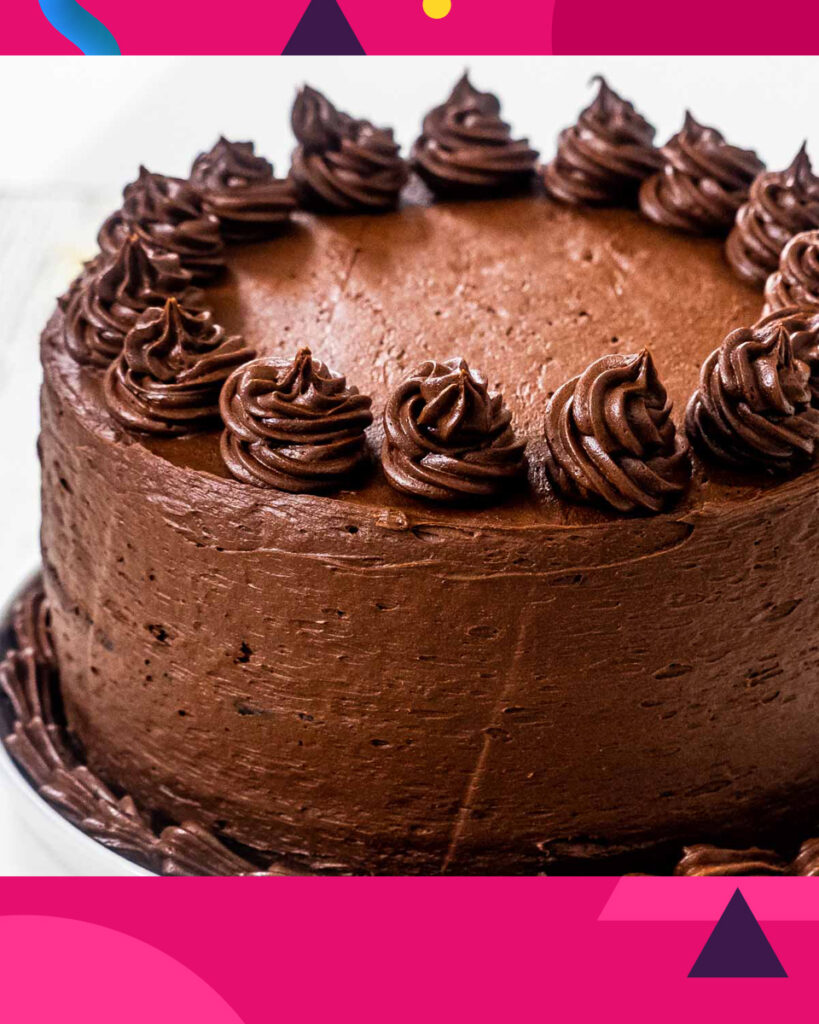
FAQs And Troubleshooting
Here are some frequently asked questions and troubleshooting tips for chocolate frosting:
1. Why is my chocolate frosting grainy or lumpy?
- This can happen if the powdered sugar or cocoa powder is not sifted, or if the butter is too cold. Make sure to sift dry ingredients and ensure your butter is softened at room temperature before starting.
2. How can I make my chocolate frosting less sweet?
- You can reduce the sweetness by adding less powdered sugar initially and adjusting to taste. A pinch of salt can also balance the sweetness.
3. Can I make chocolate frosting without butter?
- Yes, you can substitute butter with shortening or margarine for a dairy-free option. However, this may alter the flavor and texture slightly.
4. How do I fix frosting that’s too thin?
- Gradually add more powdered sugar, a tablespoon at a time, until you reach the desired consistency. Alternatively, refrigerate the frosting briefly to firm it up.
5. How do I fix frosting that’s too thick or dry?
- Add a small amount of milk or cream, a teaspoon at a time, and mix until it reaches the desired consistency.
6. Can I use milk instead of heavy cream in my chocolate frosting?
- Yes, milk can be used, but heavy cream results in a creamier and richer texture. Adjust the quantity of milk to achieve your desired consistency.
7. How do I store leftover chocolate frosting?
- Store it in an airtight container in the refrigerator for up to a week. Be sure to place plastic wrap directly on the surface of the frosting to prevent it from drying out.
8. Can I freeze chocolate frosting?
- Yes, chocolate frosting can be frozen for up to 2-3 months. Thaw it in the refrigerator and re-mix to restore its texture before using.
9. My frosting has air bubbles. How do I avoid this?
- Overmixing or using a high-speed mixer can introduce air bubbles. Mix the frosting on low to medium speed and avoid excessive beating.
10. Why does my frosting taste bitter?
- Bitterness can be caused by using low-quality cocoa powder or overdoing it with cocoa. Ensure you’re using good cocoa powder and adjust the amount to your taste.
11. Can I make chocolate frosting ahead of time?
- Yes, you can make chocolate frosting ahead and store it in the refrigerator. Allow it to come to room temperature and re-whip before using.
12. My frosting has a strange texture. What went wrong?
- Texture issues can result from uneven mixing or using ingredients at the wrong temperature. Ensure even mixing and that all ingredients are at the correct temperature.
Remember that practice and experimentation can help you perfect your chocolate frosting. Don’t hesitate to adjust ingredients and techniques to achieve your desired taste and texture.
Nutrition Information
Here’s a general approximation for the nutritional content of a typical chocolate frosting per serving (approximately 2 tablespoons):
Calories: 100-150 calories, Total Fat: 6-10 grams, Saturated Fat: 3-5 grams, Cholesterol: 10-20 milligrams, Sodium: 10-20 milligrams, Total Carbohydrates: 12-15 grams, Dietary Fiber: 1-2 grams, Sugars: 10-12 grams, Protein: 0-1 gram
Please note that these values are approximate and can vary depending on factors like the specific recipe, portion size, and ingredient variations. The use of butter or heavy cream can significantly impact the fat content and overall calorie count of the frosting.
Additionally, if you have specific dietary concerns or are looking for a lower-calorie or lower-fat frosting, you can explore alternative frosting recipes that use ingredients like Greek yogurt, reduced-fat cream cheese, or coconut oil. These substitutions can lead to variations in the nutrition profile. Always check the nutritional information on specific products or ingredients you use to get the most accurate data for your frosting.
